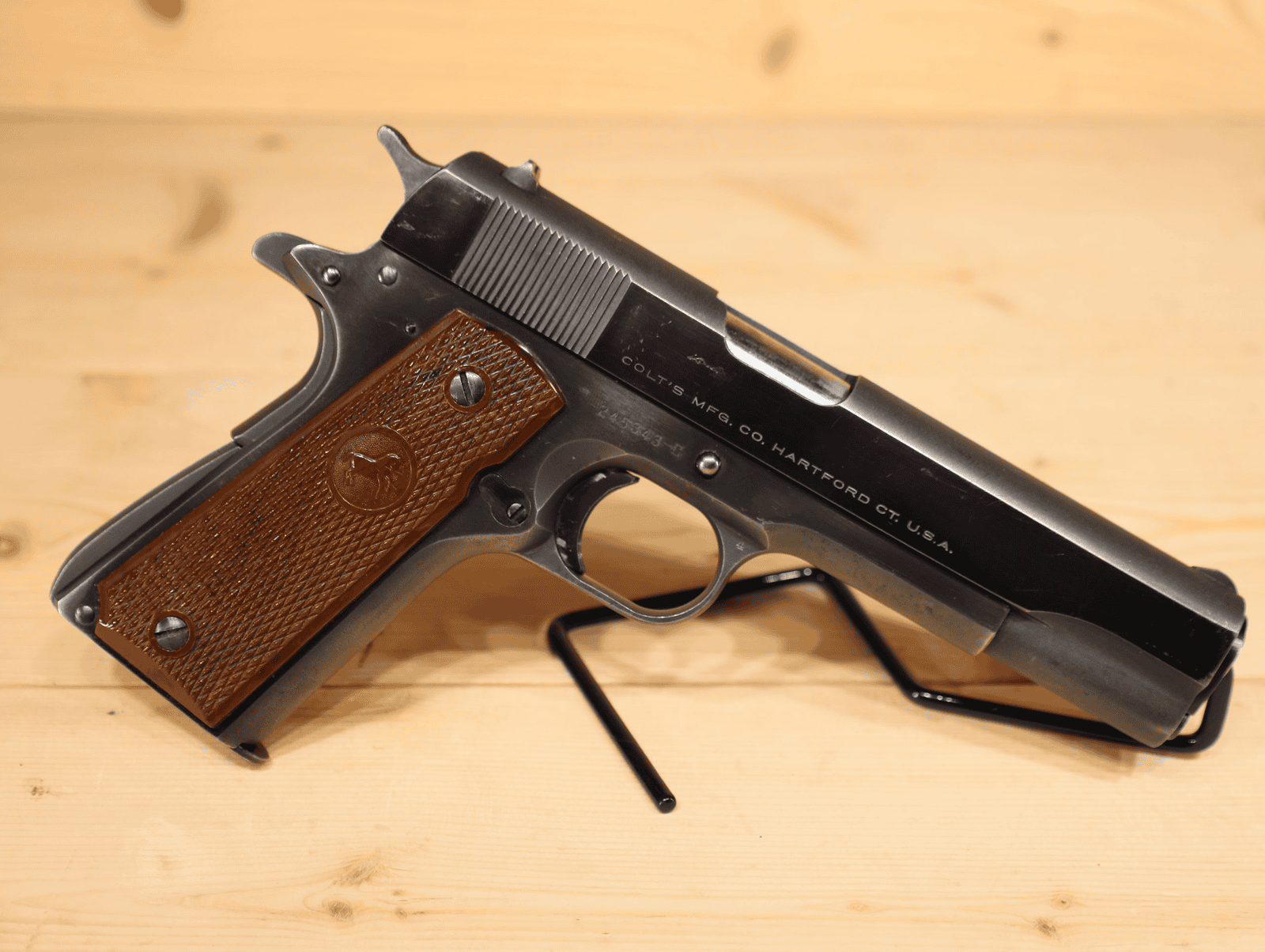
Some guns age. The Colt 1911 has only increased in stature. A century later, it is still a paragon of confidence, reliability, and American firearm ingenuity. Its legacy isn’t mechanical alone—it’s one of battlefield pragmatism, innovative design, and a cartridge that revolutionized sidearm expectations forever.

Why It All Started: Lessons from the Philippines
It was at the beginning of the 1900s that the U.S. military found its sidearms weren’t quite up to par. Soldiers in the Philippines, particularly during the Moro Rebellion, were frustrated by the standard-issue .38 Long Colt revolvers being woefully underpowered. Foes would absorb several rounds and continue to advance. The fix, short term, was to dig out some old.45-caliber Single Action Army revolvers. They performed better, but the handwriting was on the wall: it was time to get with a new, semi-automatic pistol that had actual stopping power.

The Browning Touch
Few names have so much stature in firearms history as John Moses Browning. Born and raised in Utah, where he was immersed in gunsmithing from an early age, Browning applied practical genius to gun design. His solution to the military sidearm headaches was double: a new cartridge and a pistol to go with it.

Here comes the .45 ACP
Early 1900s ballistic testing only verified what soldiers already understood: larger bullets perform better in neutralizing threats. The outcome was the .45 ACP (Automatic Colt Pistol), a 230-grain bullet traveling at around 850 feet per second. It struck hard, cycled smoothly, and delivered on the military’s requirement for substantial stopping power. Browning created the cartridge hand-in-hand with the gun that would soon chamber it.

The 1911: Born to Win
After years of refinement and several prototypes, including previous versions such as the Colt 1905, Browning’s ultimate design went through a brutal 6,000-round test against a rival pistol made by Savage. The Colt went through without a hitch. The Army decided in 1911, officially aadoptBrowning’s pistol as the Model 1911.

Proven in Battle
From the battlefields of World War I to the jungles of Vietnam, the 1911 became an unassuming sidearm that earned respect. It saw its first action in minor conflicts, but it gained its legend in the turmoil of World War I. One of the most legendary tales features Sergeant Alvin York, who used his 1911 to repel a bayonet charge and take more than 130 German prisoners. During World War II, the redesigned 1911A1 became a staple, and it was praised for its firepower and its reliability.

What Made It Special
The 1911 wasn’t merely potent—it was meticulously designed. With its five-inch barrel, seven-shot magazine, and heavy yet balanced 39-ounce frame, it presented a natural point of aim and a sharp single-action trigger. Its safety features—a grip and thumb safety—provided soldiers with confidence. Its recoil-operated system and tool-free stripping rendered it field-friendly.

Adjustments and Wartime Mass Production
After World War I, there were small modifications to produce the 1911A1—fitted with a better grip safety, shorter trigger, and arched mainspring housing. As World War II grew in intensity, demand became meteoric. Not just Colt, but Remington Rand, Ithaca, and even Singer Sewing Machines were contracted to churn out 1911s. More than 2 million had been produced by the end of the war.

Still in the Fight
Despite the Beretta M9 officially taking its place in the mid-1980s, the 1911 never actually went away. Special operations troops, police units, and shooters in the civilian sector have continued to keep it alive. Its incomparable combination of history, performance, and aesthetic appeal continues to maintain broad appeal among professionals and enthusiasts.

The Civilian Side of the 1911
Colt made civilian models available shortly after military service. From sport shooting to home protection, the 1911 saw extensive use. Its accuracy, familiar feel, and manageable recoil (for a .45-chambered gun) made it a timelessness that could be enjoyed by old-timers and newcomers alike. And the .45 ACP cartridge itself endured in everything from the Thompson submachine gun to the latest pistols by HK and Glock.

Enduring Appeal
More than a relic, the 1911 is a working icon. Today, you can find it in countless configurations—from faithful military replicas to finely tuned custom builds. Whether built for combat, carry, or the range, the core of the 1911 remains as relevant as ever.

John Browning’s magnum opus was never simply a pistol. It was an answer to a practical need, expressed with unexcelled genius. Over 100 years on, it stands as one of the finest sidearms ever crafted—a combination of beauty, strength, and function that will not be forgotten.
More related images you may be interested in:



